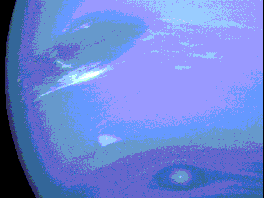This is an image of the "scooter".
Click on image for full size
NASA
Neptune's "Scooter"
One of the many cloud patterns of Neptune is the "scooter" which was discovered by Voyager in 1989.
In this image, the Great Dark Spot is found in the upper left of the image, and just below the Spot is a patch of high altitude white clouds which accompany the Spot. Below this patch of white clouds, is a triangular patch of clouds in the lower middle portion of the picture. This patch is known as "the scooter".
The scooter is probably a patch of cirrus clouds. The patch is called "the scooter" because they circle the planet very fast, faster than the Great Dark Spot.
The patch of clouds to the bottom right of this image is known as the small dark spot.
You might also be interested in:
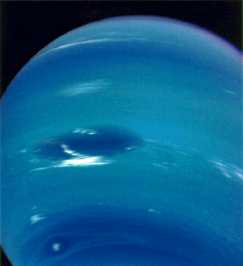
Like Jupiter and all the giant planets, Neptune's appearance shows a striped pattern of clouds. Other cloud shapes seen over time include a small dark spot, the "scooter" and the Great Dark Spot. The Great
...more
This image shows the new Great Dark Spot of Neptune, which was discovered using the Hubble Space Telescope. The image shown here, shows a "hole" in the clouds of Neptune in pink, in the northern hemisphere,
...more
Atmospheres of the giant planets have definitely evolved from their formation out of the primitive solar nebula. How much they have evolved remains to be seen, however. Because of their enormous gravity,
...more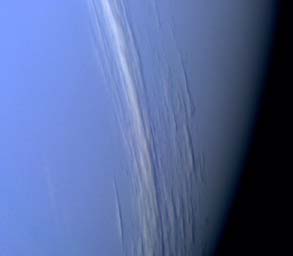
This image shows some cirrus clouds, extending for many kilometers across the disc of Neptune. These clouds are somewhat high up, for they can be seen to cast shadows on the lower clouddeck, which is 35
...more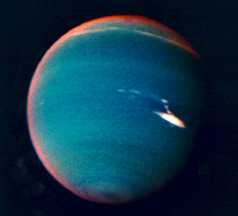
This image of Neptune uses false colors to bring out the hazes of smog, which can be seen in red along the limb of Neptune, at the edge of the picture. These hazes of smog are found at very high altitudes,
...more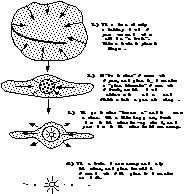
The solar system contracted, or shrank together, out of a spinning cloud of hydrogen and helium gas. This spinning cloud had a certain amount of momentum, which caused it to flatten, somewhat the way a
...more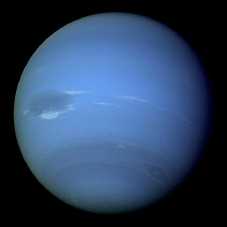
If you had a quiz question in school that asked what year Neptune was discovered, you'd probably choose 1846. But Neptune wasn't discovered the way all the other planets in our solar system were. Astronomers
...more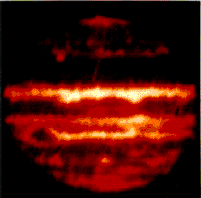
In astronomy, it is a usual procedure to calculate the luminosity of a star, and this calculation indicates the energy and the temperature of the star. When the luminosity of the outer planets was calculated,
...more


